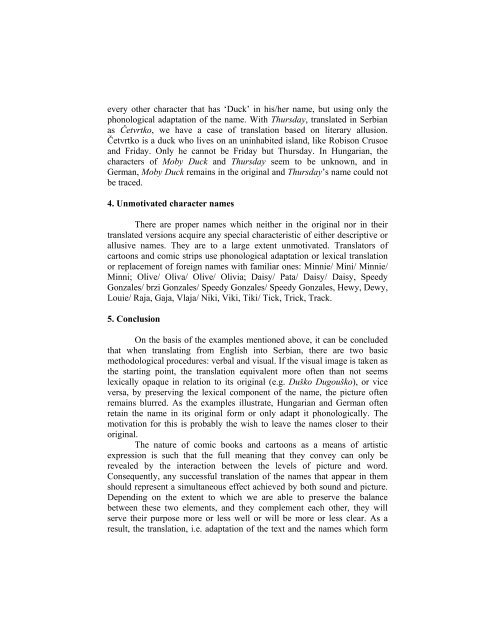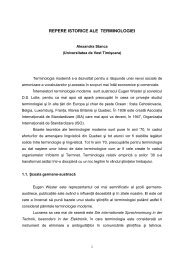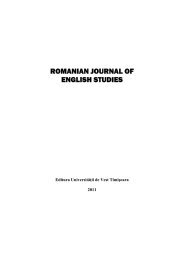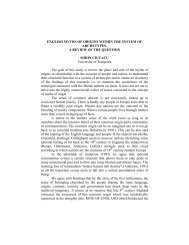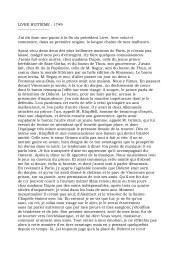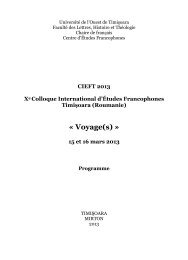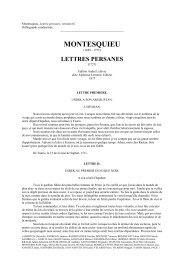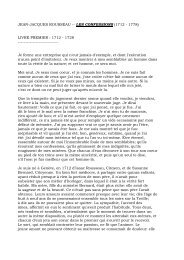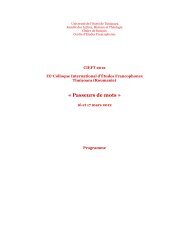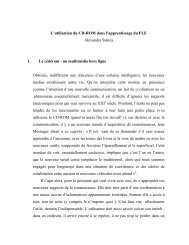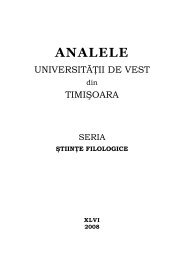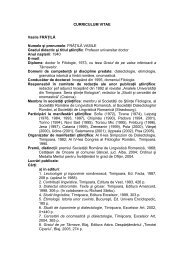TRANSLATION AND MEANING: A CULTURAL- COGNITIVE ...
TRANSLATION AND MEANING: A CULTURAL- COGNITIVE ...
TRANSLATION AND MEANING: A CULTURAL- COGNITIVE ...
You also want an ePaper? Increase the reach of your titles
YUMPU automatically turns print PDFs into web optimized ePapers that Google loves.
every other character that has ‘Duck’ in his/her name, but using only the<br />
phonological adaptation of the name. With Thursday, translated in Serbian<br />
as Četvrtko, we have a case of translation based on literary allusion.<br />
Četvrtko is a duck who lives on an uninhabited island, like Robison Crusoe<br />
and Friday. Only he cannot be Friday but Thursday. In Hungarian, the<br />
characters of Moby Duck and Thursday seem to be unknown, and in<br />
German, Moby Duck remains in the original and Thursday’s name could not<br />
be traced.<br />
4. Unmotivated character names<br />
There are proper names which neither in the original nor in their<br />
translated versions acquire any special characteristic of either descriptive or<br />
allusive names. They are to a large extent unmotivated. Translators of<br />
cartoons and comic strips use phonological adaptation or lexical translation<br />
or replacement of foreign names with familiar ones: Minnie/ Mini/ Minnie/<br />
Minni; Olive/ Oliva/ Olive/ Olivia; Daisy/ Pata/ Daisy/ Daisy, Speedy<br />
Gonzales/ brzi Gonzales/ Speedy Gonzales/ Speedy Gonzales, Hewy, Dewy,<br />
Louie/ Raja, Gaja, Vlaja/ Niki, Viki, Tiki/ Tick, Trick, Track.<br />
5. Conclusion<br />
On the basis of the examples mentioned above, it can be concluded<br />
that when translating from English into Serbian, there are two basic<br />
methodological procedures: verbal and visual. If the visual image is taken as<br />
the starting point, the translation equivalent more often than not seems<br />
lexically opaque in relation to its original (e.g. Duško Dugouško), or vice<br />
versa, by preserving the lexical component of the name, the picture often<br />
remains blurred. As the examples illustrate, Hungarian and German often<br />
retain the name in its original form or only adapt it phonologically. The<br />
motivation for this is probably the wish to leave the names closer to their<br />
original.<br />
The nature of comic books and cartoons as a means of artistic<br />
expression is such that the full meaning that they convey can only be<br />
revealed by the interaction between the levels of picture and word.<br />
Consequently, any successful translation of the names that appear in them<br />
should represent a simultaneous effect achieved by both sound and picture.<br />
Depending on the extent to which we are able to preserve the balance<br />
between these two elements, and they complement each other, they will<br />
serve their purpose more or less well or will be more or less clear. As a<br />
result, the translation, i.e. adaptation of the text and the names which form


